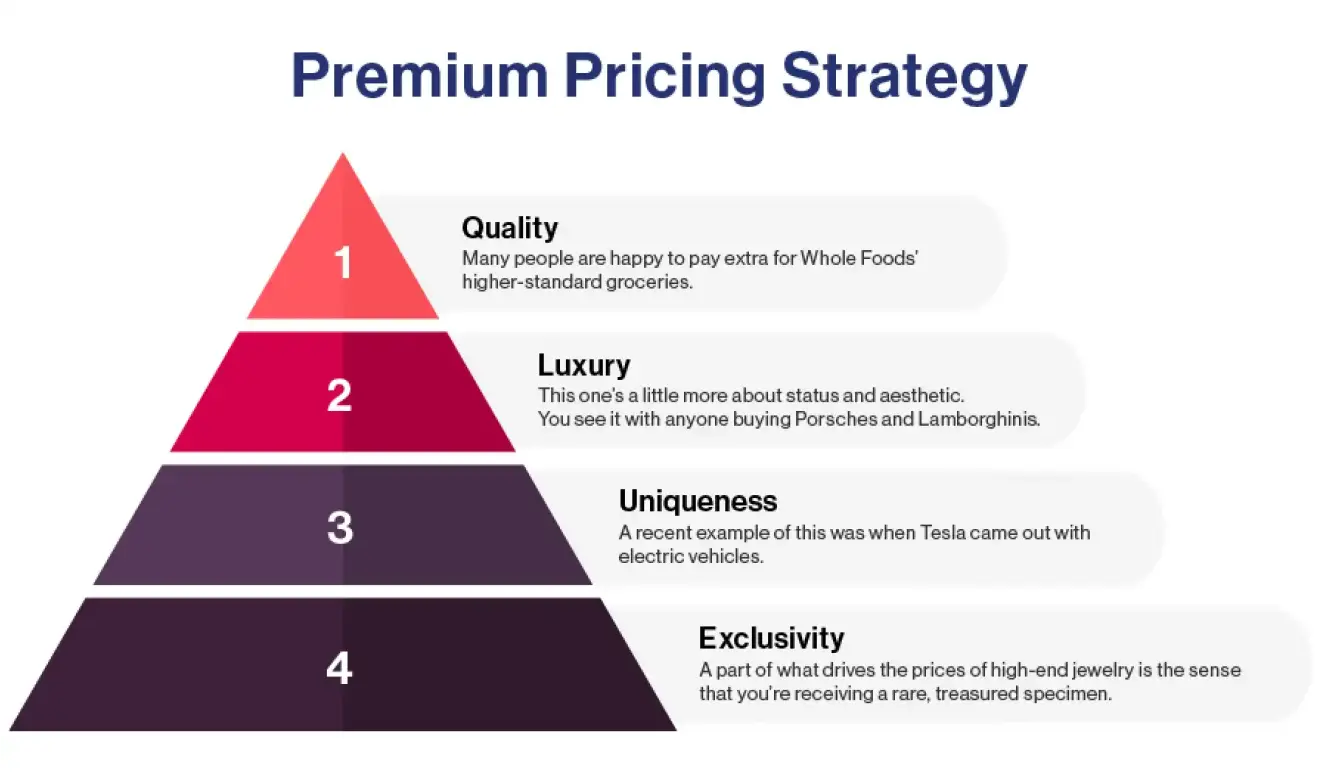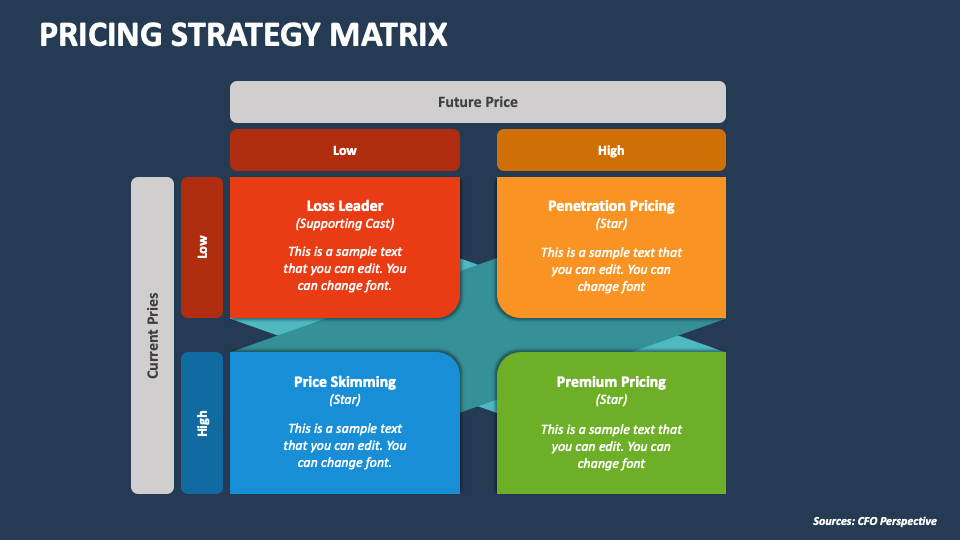The Function of Competitive Evaluation in Shaping Your Pricing Strategy
The Function of Competitive Evaluation in Shaping Your Pricing Strategy
Blog Article
Leading Pricing Techniques to Drive Sales and Consumer Loyalty
Methods such as mental pricing, value-based prices, and dynamic rates not only influence acquisition actions but likewise grow long-term connections with consumers. As we check out these strategies in even more information, it comes to be noticeable that comprehending the subtleties of prices can considerably impact a company's bottom line and client retention prices.
Emotional Rates Techniques

One more efficient technique is cost anchoring, which involves providing a higher-priced product alongside a lower-priced alternative. This contrast can alter customer assumption, making the lower-priced product appear like a deal. Additionally, packed prices-- offering multiple products at a single cost-- can evoke a sense of financial savings and urge consumers to buy even more than they at first planned.
Scarcity and necessity are additionally vital emotional triggers; limited-time offers or low-stock notifications can prompt instant acquisitions. By recognizing and using these psychological rates strategies, companies can effectively tailor their rates approaches to straighten with consumer psychology, thus driving sales and fostering brand commitment in an affordable industry.
Value-Based Prices Technique
A value-based rates approach focuses on setting prices primarily based on the regarded value a services or product deals to consumers, instead of exclusively on production expenses or rival prices. This technique calls for a deep understanding of customer demands, choices, and the special benefits that an item supplies. By aligning rate with the worth regarded by consumers, services can improve consumer satisfaction and loyalty.
Implementing a value-based pricing approach includes conducting complete market research to evaluate consumer understandings and desire to pay. Firms have to recognize the vital differentiators of their offerings and verbalize these benefits successfully. This approach can cause higher profit margins, as it allows services to catch a portion of the worth they develop for their customers.
Furthermore, a value-based pricing method urges continual enhancement and development, as business make every effort to enhance the perceived value of their products. By promoting a strong connection in between prices and value, businesses can separate themselves in competitive markets and develop durable relationships with clients. Ultimately, this strategy not just drives sales but also grows consumer commitment, placing the brand name positively in the eyes of customers.
Dynamic Rates Strategies
Dynamic pricing approaches leverage real-time data and market conditions to change costs based upon demand changes, consumer behavior, and affordable actions. This method permits services to maximize revenue by establishing costs that reflect current market dynamics. For circumstances, airline companies and resorts frequently employ dynamic rates to handle inventory and optimize profits, changing rates based on aspects such as seasonality, reserving patterns, and rival prices.
One of the main advantages of dynamic rates is its capacity to boost responsiveness. By evaluating information from numerous sources, business can quickly react to changes sought after, making sure that costs stay competitive. Furthermore, this method can assist businesses recognize rate elasticity, right here enabling them to establish the ideal cost factor that balances customer purchase and productivity.
Nevertheless, carrying out vibrant prices requires cautious factor to consider of consumer understandings and possible reaction. Ultimately, when carried out thoughtfully, dynamic pricing can lead to boosted sales, enhanced customer complete satisfaction, and improved affordable benefit in the industry.
Subscription and Subscription Models
As businesses seek innovative pricing approaches to drive sales, registration and subscription models have actually gotten prestige as a compelling alternative. These models offer a continuous earnings stream, permitting companies to anticipate cash money flow while cultivating consumer commitment. By offering access to special web content, products, or services, businesses can develop a from this source sense of value that urges recurring involvement.
One of the essential benefits of membership versions is their ability to develop long-term partnerships with clients. This technique not just boosts client retention yet likewise minimizes purchase expenses gradually. Members really feel bought the brand name, leading to enhanced life time value and an extra steady earnings base.
In addition, subscription and subscription versions can be tailored to fulfill the details needs of different customer segments. Tiered pricing frameworks permit organizations to cater to various preferences and spending plans, suiting a bigger audience. This adaptability can drive client acquisition while optimizing earnings.
In a digital age where ease and customization are extremely important, registration and membership models supply a strategic method for organizations to separate themselves - Pricing Strategy. By taking advantage of these approaches, firms can not only boost sales yet also grow a faithful consumer base that champions their brand
Bundle Pricing Supplies
Bundle prices deals have emerged as an efficient method for organizations seeking to boost sales and draw in brand-new customers. By incorporating several items or services into a solitary bundle, companies can develop perceived worth that see here motivates consumers to make bigger purchases. This approach not just streamlines the buying procedure yet likewise boosts the likelihood of cross-selling items that customers might not have initially considered.
For instance, a telecom company could pack phone, tv, and net services at a discounted rate, giving an engaging incentive for customers to pick the plan over private plans. This method not just increases instant sales but additionally fosters client commitment, as consumers are most likely to stay with a carrier that meets several demands.
Furthermore, bundle pricing can help services handle inventory much more properly by urging the sale of slower-moving things along with popular items. It is essential to guarantee that the bundled offering remains eye-catching and cost-efficient. Organizations need to routinely examine their bundle rates strategies to adapt to market trends and consumer preferences, guaranteeing they remain to supply worth while attaining their sales purposes.
Verdict
Emotional rates methods, value-based rates, vibrant prices, membership models, and bundle offers collectively produce a durable framework for companies. Eventually, a well-executed rates method aligns with client needs and preferences, contributing to continual company success in an affordable industry.
Techniques such as mental rates, value-based rates, and dynamic rates not just influence purchase actions yet likewise grow long-lasting connections with customers.A value-based rates technique focuses on setting rates mostly based on the viewed worth an item or service deals to customers, rather than only on manufacturing prices or competitor prices. Airline companies and hotels frequently utilize dynamic prices to manage supply and maximize income, adjusting prices based on elements such as seasonality, booking patterns, and rival pricing.

Report this page